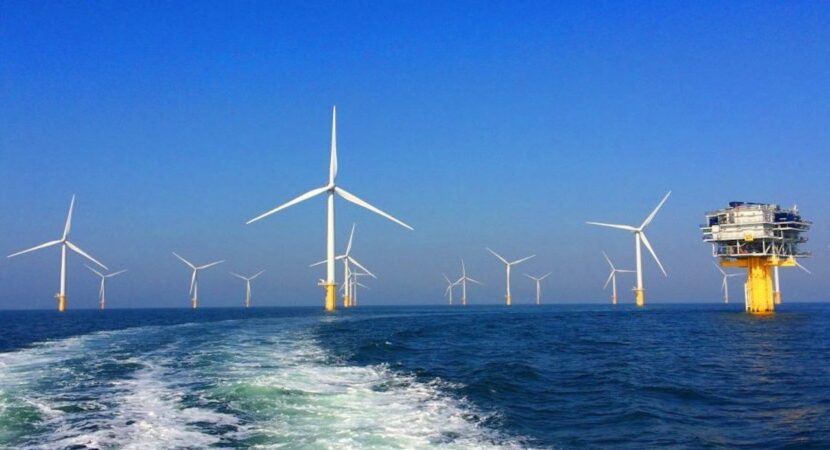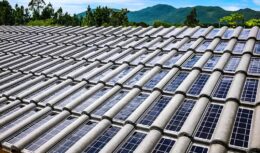
Studies will show that hydrogen can be used as a route for natural gas in the energy transition and will bring perspectives for the production of three colors of hydrogen in Brazil: gray, blue and turquoise
According to the EPBR agency, the studies that the Energy Research Company (EPE) should launch in the coming days will raise the possibility of installing blue hydrogen production plants on existing offshore oil and gas platforms in the Santos Basin pre-salt.
Read also
- Faetec opens 30.000 vacancies in more than 50 free professional training courses in the areas of Industrial Maintenance, Technology, Education, Languages and Culture in various units in Rio de Janeiro
- Vix Logística summons drivers, mechanics, technicians, helpers, carpenters, doormen and many more professionals in Macaé and Rio de Janeiro; there are job openings for candidates with and without experience
- After 77 days without increases, Petrobras is under pressure to increase the price of gasoline and diesel starting tomorrow (12/01) to ensure that the market continues to be supplied on an economic basis and without risk of shortages
- Awarded by the trade winds, Ceará could become the Saudi Arabia of Green Hydrogen at the lowest global cost
In the interview, he informs that the CO2 emitted in the process would be captured and injected into the reservoirs, as is done today with natural gas.
“Studies are still being carried out for the injection of CO2, because we already have the technology ready to inject natural gas into the reservoirs. It is a more acidic gas than natural gas, but studies point to this possibility”, explains analyst Claudia Bonelli, who participated in the elaboration of the note by the EPBR agency.
EPE, responsible for preparing the studies, led by the Director of Oil and Gas Studies, Heloisa Borges, informed the EPBR agency that the studies will show that Hydrogen can be a route for natural gas in the energy transition and will bring perspectives for production of three colors of hydrogen in Brazil:
- gray – produced from the steam reforming of natural gas with carbon emissions into the atmosphere
- blue – same process, but with CO capture and storage2 (CCS) issued
- turquoise – obtained from the pyrolysis of natural gas, generating solid carbon, a kind of coke that can be reused in industrial processes.
Another case study will demonstrate onshore blue hydrogen production, where CO2 captured would be transported to the pre-salt region for injection in the reservoirs.
EDP says that offshore wind energy production will grow in this decade
EDP has already finalized the feasibility analyzes of its BEHYOND project, which aims to produce green hydrogen from offshore wind energy. Have you ever wondered what it would be like to produce green hydrogen on the high seas through offshore wind energy? It's possible! This was the conclusion of the first phase of the project led by EDP, BEHYOND, in consortium with TechnipFMC, WavEC, CEiiA and the Norwegian University USN.
After approximately six months, EDP's BEHYOND project finalizes the technical-economic feasibility analyzes for generating green hydrogen from offshore wind energy, that is, on the high seas, where wind resources are greater, according to company in a statement.
In this phase, which had European funds as support due to the innovative nature of the research, an analysis of various configurations was created for an offshore green hydrogen generation module, where electrolysis is carried out using electricity that is generated by wind energy parks offshore, according to those responsible for the EDP project.
According to the company, offshore wind energy production should grow significantly by 2030 and the BEHYOND project proves that there is great potential to have a double production of renewable energy in the same place, creating synergies in infrastructure, network points and energy transport cables to the “solid land”.
EDP project will be viable with investments from other companies
According to EDP, the configuration studied in the project can be installed all over the world, generating and transferring green hydrogen on a large scale. This technological development is a pioneer in the growth of the fuel value chain in the context of a blue economy and could be the solution for expanding the competitiveness of offshore wind farms.
The first phase of the company's project concluded that economic viability will be achieved with advances in the green hydrogen value chain and industry and, in addition, through investments by companies that are positioning themselves in the market, complemented by funds to support innovation.
Increased demand for renewable energies will make the project viable
According to EDP, another way to make the project viable will be to encourage the industry to accelerate the transition process to renewable energies, expanding the demand for projects like this one.
The company coordinated the project through EDP NEW R&D and EDP Inovação, and was also responsible for the strategic assessment of the offshore wind energy and green hydrogen market, for the definition of business cases, and also for the technological innovation that will be necessary to make possible for these solutions to enter the market.
The project brings together the company and TechnipFMC, a leading company in the creation of offshore engineering projects and solutions, the CEiiA research centres, the University of South-Eastern Norway and WavEC-Offshore Renewables. Read the full story here.













Army summons Brazilians with up to…
Come be a watermelon, you too
Air Force F-16 fighters…
Everything is fine, 100-year secrecy,…
Air Force F-16 fighters…
Well... It's flying scrap... Typical...
Air Force F-16 fighters…
Which genocide are you talking about? Than…
They discover the third largest deposit…
That’s why all foreigners and NGOs…
What is the price?
I would buy it right away without a doubt...
Problem is the evolution of technology, how many years…
Exactly that my brother
Did you say SCAM??? Then ask…
I have high school I can…
I love
People have a vision of China…